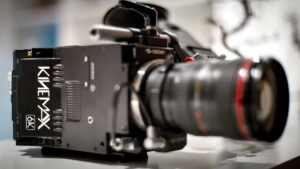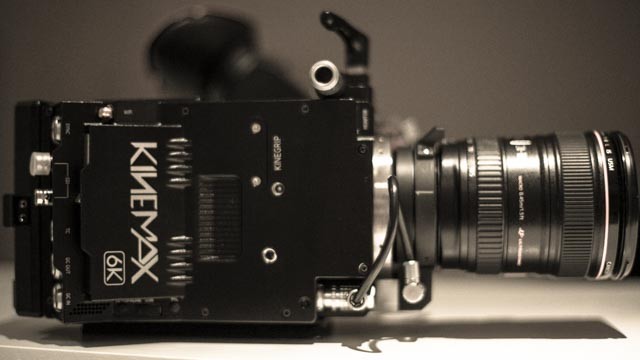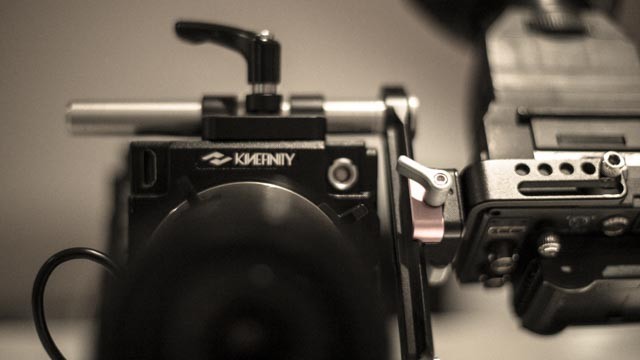Kinefinity KineMAX 6K Review – Resolution That Blows Away Your Screen
+++ Please note. This KineMax 6K review and footage are based on a Pre Production model. We tend not to publish our LAB test results unless the camera is in its final stage. A full LAB review will be published then+++
The weatherman promised sunshine. So what. All I got was a grey windy day with some kind of natural “pro Mist filter” cast. Instead of crying my heart out and kick myself in the head for not running with the camera a day earlier, I decided to live with what I have and give it a try. After all, I had to send the camera back the next day.
This is not the first time that I’m testing a Kinefinity camera. Back in 2013 it was the KineRAW mini which made me appreciate what the relatively new to the market Chinese manufacturer is doing, supplying affordable high quality cameras to filmmakers like us.
And then came the opportunity to test the yet to be released KineMAX 6K camera and let me tell you, what a powerful piece of gear it is!
Ungraded 6K Frame Grabs:
When the package arrived at our cinema5D premises, I thought there was a mistake. The small size box made me believe we only got some accessories to the camera and not the camera itself, so to my surprise, after opening the package, there it was. Small, lightweight, robust, well made. (Almost “German build quality” sort so to speak). Also in the package there were two mounts, for PL and EF lenses. Kinefinity developed an interchangeable mount system for their camera. Just turn the bayonet lock and change to the lens mount of your desire, depending on the lenses you have. My take was to go with 3 EF lenses. The Tokina 11-16mm F/2.8, Canon 24-105mm F/4.0 IS and the Canon 70-200mm F/4.0 IS. Kinefinty’s EF adapter is an electronic one, allowing you to control Canon lenses much like the Metabones adaptors do.
10 minutes into the process of refreshing my (old) memory with the menu structure and I could easily appreciate the actual external buttons layout which allowed me to quickly change the camera settings to my desired resolution/recording format/FPS/ISO/Picture Profile/WB/SSD (activating and formatting)/Shutter speed/and IRIS. So much easier then AJA’s CION we’ve tested just a while ago. (Try dealing with CION’s menu without reading the manual and be prepared to lose your nerves a little).
When it comes to recording media, based on Kinefinity’s advice we had great success recording 6K into Samsung 850 PRO 256GB SSD. (Remember “de-activating” the SSD prior to taking it out of the camera slot, otherwise you might encounter error messages when connecting the SSD to your computer).
The KineMAX 6K camera has the ability to record in numerous frame sizes, recording formats resolutions and adjustable frame rates. See the complete list at the bottom of my article.
For this short video I used:
– S35 frame size
– 6K resolution (5760×2400 wide)
– KineRAW codec
– 25 FPS
– ISO 800 (native value)
– KineLOG picture profile
For the slow motion sequence:
– S16 frame size
– 2K resolution (2880×1200 wide)
– KineRAW codec
– 75 FPS
Editing
From my experience, the current bottleneck of the workflow is the editing process.
Kinefinity supplies a cross platform (Mac/PC) free copy of their KineStation software in order to transcode the recorded 6K footage (in KineRAW or CinemaDNG formats) to Cineform RAW or Cineform RGB444.
Transcoding 256 GB of footage recorded with KineRAW codec on my Retina Macbook Pro 2013 took the following:
– To Cineform RAW (MOV), 53 minutes
– To Cineform RGB444 (MOV), 71 minutes.
Obviously transcoding to Cineform RAW (MOV) will reduce the overall “downtime” required from finishing shooting till you get to edit your footage (which is anyway challenging because of the high 6K resolution) but the real alternative should be moving into a native in-camera ProRes recording or at least ProRes transcoding and guess what, when asked about the possibility to move towards this direction the official answer we got was, “Kinefinity will add ProRes codec in KineStation or in-camera recording in the future, but there is no detailed timetable”.
Conclusion
All in all I had a very positive experience shooting with this new camera. Its build and picture quality are very promising. On the negative side, evident rolling shutter effects can be seen under certain shooting conditions.
The Kinefinity KineMAX 6K will be available to Chinese customers in April and internationally during May. For the complete camera pricing information, please head to Kinefinity site.
Last word
The KineMAX 6K a serious film-making tool and I can only hope that professionals will give it a try and seriously consider it as a valid candidate for their next project.
Edited on Adobe Premiere CC 2014, Colour corrected with FilmConvert – get $30 off by using our promo code “cinema5d”
Music: https://www.musicbed.com/ MARIE HINES-In My Arms
For enhanced viewing experience, please download the 4K video from our Vimeo page. (Download/Original)
For our European followers, the camera can be purchased by clicking here
| Frame Size | Format | Resolution | MAX FPS | Cineform | KineRAW | CinemaDNG |
| S35 | 6K HD | 5760×3240* | 25 | ✔ | ||
| 6K HD Wide | 5760×2400* | 30 | ✔ | |||
| Golden 3K | 2880×1620* | 25 | ✔ | ✔ | ✔ | |
| Golden 3K Wide | 2880×1200* | 30 | ✔ | ✔ | ✔ | |
| HiSpeed S35 | 4K HD | 3840×2160 | 80** | ✔ | ||
| 4K HD Wide | 3840×1716 | 100** | ✔ | |||
| 3K HD | 2880×1620 | 80** | ✔ | |||
| 3K HD Wide | 2880×1200 | 100** | ✔ | |||
| 2K HD | 1920×1080 | 80** | ✔ | |||
| 2K HD Wide | 1920×864 | 100** | ✔ | |||
| M4/3 | 4.3K 4:3 Anamorphic | 4320×3240* | 25 | ✔ | ||
| 4K 4:3 Anamorphic | 4096×3072* | 25 | ✔ | |||
| 4K | 4096×2160 | 30 | ✔ | ✔ | ||
| 4K Wide | 4096×1716 | 48 | ✔ | ✔ | ||
| 4K HD | 3840×2160 | 30 | ✔ | ✔ | ||
| 4K HD Wide | 3840×1716 | 48 | ✔ | ✔ | ||
| Golden 2K | 2048×1080 | 30 | ✔ | ✔ | ✔ | |
| Golden 2K Wide | 2048×858 | 48 | ✔ | ✔ | ✔ | |
| Golden 2K HD | 1920×1080 | 30 | ✔ | ✔ | ✔ | |
| Golden 2K HD Wide | 1920×858 | 48 | ✔ | ✔ | ✔ | |
| HiSpeed M4/3 | 2K | 2048×1080 | 120** | ✔ | ||
| 2K Wide | 2048×864 | 144** | ✔ | |||
| S16 | 3K | 3072×1620 | 50 | ✔ | ✔ | |
| 3K Wide | 3072×1280 | 60 | ✔ | ✔ | ||
| 3K HD | 2880×1620 | 50 | ✔ | ✔ | ✔ | |
| 3K HD Wide | 2880×1200 | 60 | ✔ | ✔ | ✔ | |
| 16mm | 2K | 2048×1080 | 80** | ✔ | ✔ | ✔ |
| 2K Wide | 2048×860 | 100** | ✔ | ✔ | ✔ | |
| 2K HD | 1920×1080 | 80** | ✔ | ✔ | ✔ | |
| 2K HD Wide | 1920×860 | 100** | ✔ | ✔ | ✔ |
Notes:
- * Means these resolution modes are only included in 6K RAW option;
- ** Means these fps modes are only included in HiSpeed option
- When Cineform recording, 3K HD @24fps, 2K HD @48fps or less.
- Frame Rate can be adjusted as 6~MAX fps, step accuracy of 0.001fps
Johnnie Behiri is a freelance documentary cameraman/editor/producer working mostly for the BBC and other respected broadcasters. He is also co-owner of cinema5d.com






























